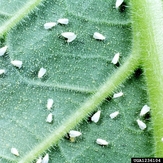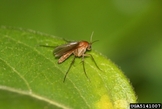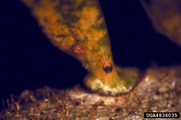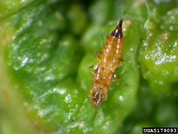(Insect images are at the bottom of the page.)
Spring has sprung, at least here in West Georgia. We have had an incredible amount of rain so far this year but it still doesn't make up for a long-running drought. We are very anxious about our water table.
Looking at the puddles makes me think of bowls of green pea soup! An incredible amount of green and yellow pollen has coated everything. We are barely into the pollen season!
Right now I am a computer hacker. I am sitting at my computer and hacking...and coughing...and sneezing.
I watch the wisteria dripping purple, the Bradford pear trees popping, and the beautiful white dogwood trees exploding in brilliant white. You know the old saying, “I can hear my grass (well, really more like weeds) growing?” The grass isn't sighing. It has bronchitis!
There's so much green and yellow pollen that I lost my John Deere lawn tractor the other day! This is a great time to take your kids to a car dealership so you can teach them the primary, secondary, and tertiary colors and color-mixing.
You get the drift. Speaking of drifts, we Southerners could probably make snowmen out of pollen right now! Unfortunately, growers have a bigger issue than just burning, itchy eyes and runny noses.
Insects. Wonderful, amazing and prolific insects. Insects are not as destructive to hydroponic plants as soil-grown plants, especially if grown in a well-sealed greenhouse, but they can still take their toll. I lost a lot of tomatoes one year (my soil gardening days) to tomato hornworms.
I'm crafting this blog around some general insect information with an emphasis on insects that are of concern to hydroponic growers.
One of the benefits of growing hydroponic plants is significantly less insect infestation. Most of us grow our stuff indoors, or in a greenhouse, or in grow rooms and tents. But we don't have surgical operating rooms or NASA clean rooms. We aren't hermetically sealed. The critters are small, wriggly, and can hop and fly faster than we can crush them. That, by the way, is my favorite method in dealing with pests: I search them out on my plant surfaces and smoosh them. You can't get them all that way. Have you ever tried to crush a spider mite? It's like crushing a tick. There's too many of them, and they just laugh at you.
My neighbor probably despises me. I have gone very natural. I let the birds and the bees do their thing, and the four-legged and winged critters have the run of the place. I don't have a mosquito problem because the bats love them. I don't have roaches because the spiders snack on them. The hawks, eagles and snakes love the small critters. The point is, if you let nature do what nature does best, then most of the time everything stays in balance. My lawn has slowly turned to clover, which the bees love. If you haven't heard, the bee population has dropped alarmingly. What's going to pollinate our plants? We can't all run around with soft makeup brushes, collecting pollen and hand-pollinating plants!
I don't kill ladybugs (lady birds to some folk), wasps and garden spiders. The insects that crawl on, chew on, and dig into our plants are a roving banquet to them. Ladybugs, bees, wasps, lacewings, dragonflies, praying mantises and spiders are welcome in my greenhouse. I haven't tried this yet, but some advanced greenhouse growers buy ladybugs and lacewings and release them into the greenhouse. My greenhouse is small; no more than twenty-to-twenty-five plants. That is manageable by my control methods without buying insects. If you have a large greenhouse then it might be sensible.
Jim, what are some common pests for hydroponic growers? I mentioned hornworms. Hornworms will eat almost any plant you can grow hydroponically or in soil. They come into your greenhouse as moths, and if you let them, they will eat all your goodies and then leave as moths. Hornworms are big, green, and ugly caterpillars. They look like something out of a bad science fiction movie. That is their downfall. They are easily seen. Keep moths and butterflies out; watch for and crush any caterpillar, which are the larvae of thousands of species of moth and butterfly. If you can't stomach doing that, then pick them off and put them in a bucket of water and drown them. Yes, I know that many butterflies and moths are pollinators, just not in my greenhouse. They can pollinate my bushes and flowers.
Insidious aphids. They asexually reproduce, making them one of the most successful insect species ever. They are small sap suckers (hemiptera) and will kill your plants by puncturing the phloem, which is analogous to our arteries. The phloem carries the sap under pressure. When aphids feed, they leave behind a sweet sticky substance called “honeydew.” Some ants will collect this honeydew for food and also protect the aphids.
When I see small ants crawling all over a plant, I know that plant is probably in trouble. I have picked aphids and ants off with tweezers. Ladybugs and lacewings are their predators. If you let aphids gain a hold in your garden, you'll lose everything.
Whiteflies. Whiteflies are small, white hemipterans (plant piercers and suckers) that look like tiny white moths. They feed like aphids on phloem sap, and also leave behind a “honeydew.” Whiteflies are a growing worldwide scourge. They can spread over sixty plant diseases, including yellow tomato leaf curl, and molds. Like hornworms, caterpillars, and aphids, they will feed on just about anything.
Last year, I had clouds of them in and outside of my greenhouse. I used bug zapper lights inside the greenhouse, and the non-toxic organic plant-oil insecticide described in another blog. You can gently wash the plants and use insecticidal soaps. These things are very hard to control. Whitefly predators include ladybugs, lacewings, damsel bugs, and several others.
Fungus gnats. Tiny, dark-bodied gnats that look like the fruit flies you see hanging around ripe fruit. In fact, you will see clouds of these little, annoying creatures hovering around your plants if they have easy access to roots and fungi. If you have open and airy media, they will get down into that. They will fly into your eyes, ears, and up your nose! Thank goodness they aren't harmful to us. They are good and bad: They can be plant pollinators but also carry disease, and the larvae cause great damage.
Fungus gnats don't feed on the plant itself. Their larvae feed on compromised, rotting roots and various fungi, mold, and algae found in hydroponic root systems. Some of that fungi can be beneficial to your plants but those pesky little gnats don't know that. They only see it as a bountiful offering to get stuffed with. I've lost a few plants to fungus gnats. Sealing your reservoirs is about the only effective method of prevention. There are some tiny predator mites that will eat their larvae. I have had some success with the non-toxic, organic insect spray described here.
Spider mites. They look like tiny spiders but are members of the Acari, or mite family. They are incorrectly called spiders because they will build tiny webs to protect their brood. I hate these things with a passion. They are known to infest hundreds of species of plants. They become a severe issue during drought. They are highly adaptable and become insecticide-resistant because they quickly breed and proliferate.
If you see tiny little black or red spider-like pests crawling all over your plants, and/or see tiny webs between stems and leaves, then you are probably infested with these little cell suckers. I lost a bunch of bell pepper plants to these tiny terrors. You can use insecticidal soaps, neem oil, and the organic spray I've reported on.
Predators include ladybugs, certain other mites, some types of thrips, big-eyed beetles, and damsel bugs.
Thrips. These little hairy-winged insects are slim-bodied and are a yellowish color. Usually the wings are folded closely against their back. They don't directly suck out juices; they use a single mandible to rasp the plant surface, sort of like a cheese grater, until they burst epidermal cells, and then suck up the juices. Thrips will attack many different plants. Thrips can also transmit plant diseases, including viruses. A tiny wasp that attacks mites and aphids can sometimes be used to control them. Immature lacewings are predators.
I've been fortunate. I've only seen a few thrips around my plants over the years. Your best bet is to use insecticidal soaps and plant-oil sprays, such as the one described here. By the way, it's always thrips, singular or plural, not thrip.
These six insects appear to be the top pests for most hydroponic growers. There are many other insects that would love to belly up to the food bar and gorge on your vegetables! Start with the USDA and your local extension office. The web has hundreds of sites discussing and identifying crop pests.
Plant (and your own) and reservoir hygiene, physical barriers, and biological, natural remediation are the superior methods for pest control.
Seal your reservoirs and greenhouses as best as you can and use acceptable methods to keep your reservoirs free of algae, fungi, and molds. Use small-opening nets and screens over fans and windows, etc. Keep the door closed as much as you can. Gently wash the leaves with an insecticidal soap. Allow local ladybugs, lacewings, praying mantises, garden spiders, and wasps to access your plants. Local bees need to be supported. Let them in to pollinate.
Use plant-oil based insecticides. Keep grass and weeds near your greenhouse trimmed. Keep your plants' leaves hydrated during dry periods. Use “bug zapping” lights. Consider buying and releasing ladybugs, lacewings, dragonflies, damsel bugs, and parasitic wasps into your greenhouse.
Lightly spray your plants with 3% hydrogen peroxide, diluted to 2 parts of plain water to one part of hydrogen peroxide (use only on mature plants). Keep small fans blowing across the plants. Physically pick off visible pests.
All insects have a place in the food chain. They just don't have to pull up a chair to my table.
Image credits: Hornworm (Tobacco hornworm shown)- John C. French, Sr., (retired) affiliations: Auburn Univ., University of Georgia, Clemson, and Univ. of Missouri – Bugwood.org
Whiteflies- Clemson Univ. -USDA Cooperative Extension Slide Series – Bugwood.org
Aphids- United States National Collection of Scale Insects Photographs Archives, USDA Agricultural Research Services – Bugwood.org
Fungus gnat- Johnny N. Dell, - Bugwood.org
Spider mites- E. Bradford Walker, Vermont Dept. of Forests, Parks and Recreation – Bugwood.org
Thrips- G.B. Edwards, Florida Dept. of Agriculture and Consumer Services Division of Plant Industry-Entomology Section- Bugwood.org
Spring has sprung, at least here in West Georgia. We have had an incredible amount of rain so far this year but it still doesn't make up for a long-running drought. We are very anxious about our water table.
Looking at the puddles makes me think of bowls of green pea soup! An incredible amount of green and yellow pollen has coated everything. We are barely into the pollen season!
Right now I am a computer hacker. I am sitting at my computer and hacking...and coughing...and sneezing.
I watch the wisteria dripping purple, the Bradford pear trees popping, and the beautiful white dogwood trees exploding in brilliant white. You know the old saying, “I can hear my grass (well, really more like weeds) growing?” The grass isn't sighing. It has bronchitis!
There's so much green and yellow pollen that I lost my John Deere lawn tractor the other day! This is a great time to take your kids to a car dealership so you can teach them the primary, secondary, and tertiary colors and color-mixing.
You get the drift. Speaking of drifts, we Southerners could probably make snowmen out of pollen right now! Unfortunately, growers have a bigger issue than just burning, itchy eyes and runny noses.
Insects. Wonderful, amazing and prolific insects. Insects are not as destructive to hydroponic plants as soil-grown plants, especially if grown in a well-sealed greenhouse, but they can still take their toll. I lost a lot of tomatoes one year (my soil gardening days) to tomato hornworms.
I'm crafting this blog around some general insect information with an emphasis on insects that are of concern to hydroponic growers.
One of the benefits of growing hydroponic plants is significantly less insect infestation. Most of us grow our stuff indoors, or in a greenhouse, or in grow rooms and tents. But we don't have surgical operating rooms or NASA clean rooms. We aren't hermetically sealed. The critters are small, wriggly, and can hop and fly faster than we can crush them. That, by the way, is my favorite method in dealing with pests: I search them out on my plant surfaces and smoosh them. You can't get them all that way. Have you ever tried to crush a spider mite? It's like crushing a tick. There's too many of them, and they just laugh at you.
My neighbor probably despises me. I have gone very natural. I let the birds and the bees do their thing, and the four-legged and winged critters have the run of the place. I don't have a mosquito problem because the bats love them. I don't have roaches because the spiders snack on them. The hawks, eagles and snakes love the small critters. The point is, if you let nature do what nature does best, then most of the time everything stays in balance. My lawn has slowly turned to clover, which the bees love. If you haven't heard, the bee population has dropped alarmingly. What's going to pollinate our plants? We can't all run around with soft makeup brushes, collecting pollen and hand-pollinating plants!
I don't kill ladybugs (lady birds to some folk), wasps and garden spiders. The insects that crawl on, chew on, and dig into our plants are a roving banquet to them. Ladybugs, bees, wasps, lacewings, dragonflies, praying mantises and spiders are welcome in my greenhouse. I haven't tried this yet, but some advanced greenhouse growers buy ladybugs and lacewings and release them into the greenhouse. My greenhouse is small; no more than twenty-to-twenty-five plants. That is manageable by my control methods without buying insects. If you have a large greenhouse then it might be sensible.
Jim, what are some common pests for hydroponic growers? I mentioned hornworms. Hornworms will eat almost any plant you can grow hydroponically or in soil. They come into your greenhouse as moths, and if you let them, they will eat all your goodies and then leave as moths. Hornworms are big, green, and ugly caterpillars. They look like something out of a bad science fiction movie. That is their downfall. They are easily seen. Keep moths and butterflies out; watch for and crush any caterpillar, which are the larvae of thousands of species of moth and butterfly. If you can't stomach doing that, then pick them off and put them in a bucket of water and drown them. Yes, I know that many butterflies and moths are pollinators, just not in my greenhouse. They can pollinate my bushes and flowers.
Insidious aphids. They asexually reproduce, making them one of the most successful insect species ever. They are small sap suckers (hemiptera) and will kill your plants by puncturing the phloem, which is analogous to our arteries. The phloem carries the sap under pressure. When aphids feed, they leave behind a sweet sticky substance called “honeydew.” Some ants will collect this honeydew for food and also protect the aphids.
When I see small ants crawling all over a plant, I know that plant is probably in trouble. I have picked aphids and ants off with tweezers. Ladybugs and lacewings are their predators. If you let aphids gain a hold in your garden, you'll lose everything.
Whiteflies. Whiteflies are small, white hemipterans (plant piercers and suckers) that look like tiny white moths. They feed like aphids on phloem sap, and also leave behind a “honeydew.” Whiteflies are a growing worldwide scourge. They can spread over sixty plant diseases, including yellow tomato leaf curl, and molds. Like hornworms, caterpillars, and aphids, they will feed on just about anything.
Last year, I had clouds of them in and outside of my greenhouse. I used bug zapper lights inside the greenhouse, and the non-toxic organic plant-oil insecticide described in another blog. You can gently wash the plants and use insecticidal soaps. These things are very hard to control. Whitefly predators include ladybugs, lacewings, damsel bugs, and several others.
Fungus gnats. Tiny, dark-bodied gnats that look like the fruit flies you see hanging around ripe fruit. In fact, you will see clouds of these little, annoying creatures hovering around your plants if they have easy access to roots and fungi. If you have open and airy media, they will get down into that. They will fly into your eyes, ears, and up your nose! Thank goodness they aren't harmful to us. They are good and bad: They can be plant pollinators but also carry disease, and the larvae cause great damage.
Fungus gnats don't feed on the plant itself. Their larvae feed on compromised, rotting roots and various fungi, mold, and algae found in hydroponic root systems. Some of that fungi can be beneficial to your plants but those pesky little gnats don't know that. They only see it as a bountiful offering to get stuffed with. I've lost a few plants to fungus gnats. Sealing your reservoirs is about the only effective method of prevention. There are some tiny predator mites that will eat their larvae. I have had some success with the non-toxic, organic insect spray described here.
Spider mites. They look like tiny spiders but are members of the Acari, or mite family. They are incorrectly called spiders because they will build tiny webs to protect their brood. I hate these things with a passion. They are known to infest hundreds of species of plants. They become a severe issue during drought. They are highly adaptable and become insecticide-resistant because they quickly breed and proliferate.
If you see tiny little black or red spider-like pests crawling all over your plants, and/or see tiny webs between stems and leaves, then you are probably infested with these little cell suckers. I lost a bunch of bell pepper plants to these tiny terrors. You can use insecticidal soaps, neem oil, and the organic spray I've reported on.
Predators include ladybugs, certain other mites, some types of thrips, big-eyed beetles, and damsel bugs.
Thrips. These little hairy-winged insects are slim-bodied and are a yellowish color. Usually the wings are folded closely against their back. They don't directly suck out juices; they use a single mandible to rasp the plant surface, sort of like a cheese grater, until they burst epidermal cells, and then suck up the juices. Thrips will attack many different plants. Thrips can also transmit plant diseases, including viruses. A tiny wasp that attacks mites and aphids can sometimes be used to control them. Immature lacewings are predators.
I've been fortunate. I've only seen a few thrips around my plants over the years. Your best bet is to use insecticidal soaps and plant-oil sprays, such as the one described here. By the way, it's always thrips, singular or plural, not thrip.
These six insects appear to be the top pests for most hydroponic growers. There are many other insects that would love to belly up to the food bar and gorge on your vegetables! Start with the USDA and your local extension office. The web has hundreds of sites discussing and identifying crop pests.
Plant (and your own) and reservoir hygiene, physical barriers, and biological, natural remediation are the superior methods for pest control.
Seal your reservoirs and greenhouses as best as you can and use acceptable methods to keep your reservoirs free of algae, fungi, and molds. Use small-opening nets and screens over fans and windows, etc. Keep the door closed as much as you can. Gently wash the leaves with an insecticidal soap. Allow local ladybugs, lacewings, praying mantises, garden spiders, and wasps to access your plants. Local bees need to be supported. Let them in to pollinate.
Use plant-oil based insecticides. Keep grass and weeds near your greenhouse trimmed. Keep your plants' leaves hydrated during dry periods. Use “bug zapping” lights. Consider buying and releasing ladybugs, lacewings, dragonflies, damsel bugs, and parasitic wasps into your greenhouse.
Lightly spray your plants with 3% hydrogen peroxide, diluted to 2 parts of plain water to one part of hydrogen peroxide (use only on mature plants). Keep small fans blowing across the plants. Physically pick off visible pests.
All insects have a place in the food chain. They just don't have to pull up a chair to my table.
Image credits: Hornworm (Tobacco hornworm shown)- John C. French, Sr., (retired) affiliations: Auburn Univ., University of Georgia, Clemson, and Univ. of Missouri – Bugwood.org
Whiteflies- Clemson Univ. -USDA Cooperative Extension Slide Series – Bugwood.org
Aphids- United States National Collection of Scale Insects Photographs Archives, USDA Agricultural Research Services – Bugwood.org
Fungus gnat- Johnny N. Dell, - Bugwood.org
Spider mites- E. Bradford Walker, Vermont Dept. of Forests, Parks and Recreation – Bugwood.org
Thrips- G.B. Edwards, Florida Dept. of Agriculture and Consumer Services Division of Plant Industry-Entomology Section- Bugwood.org






 RSS Feed
RSS Feed